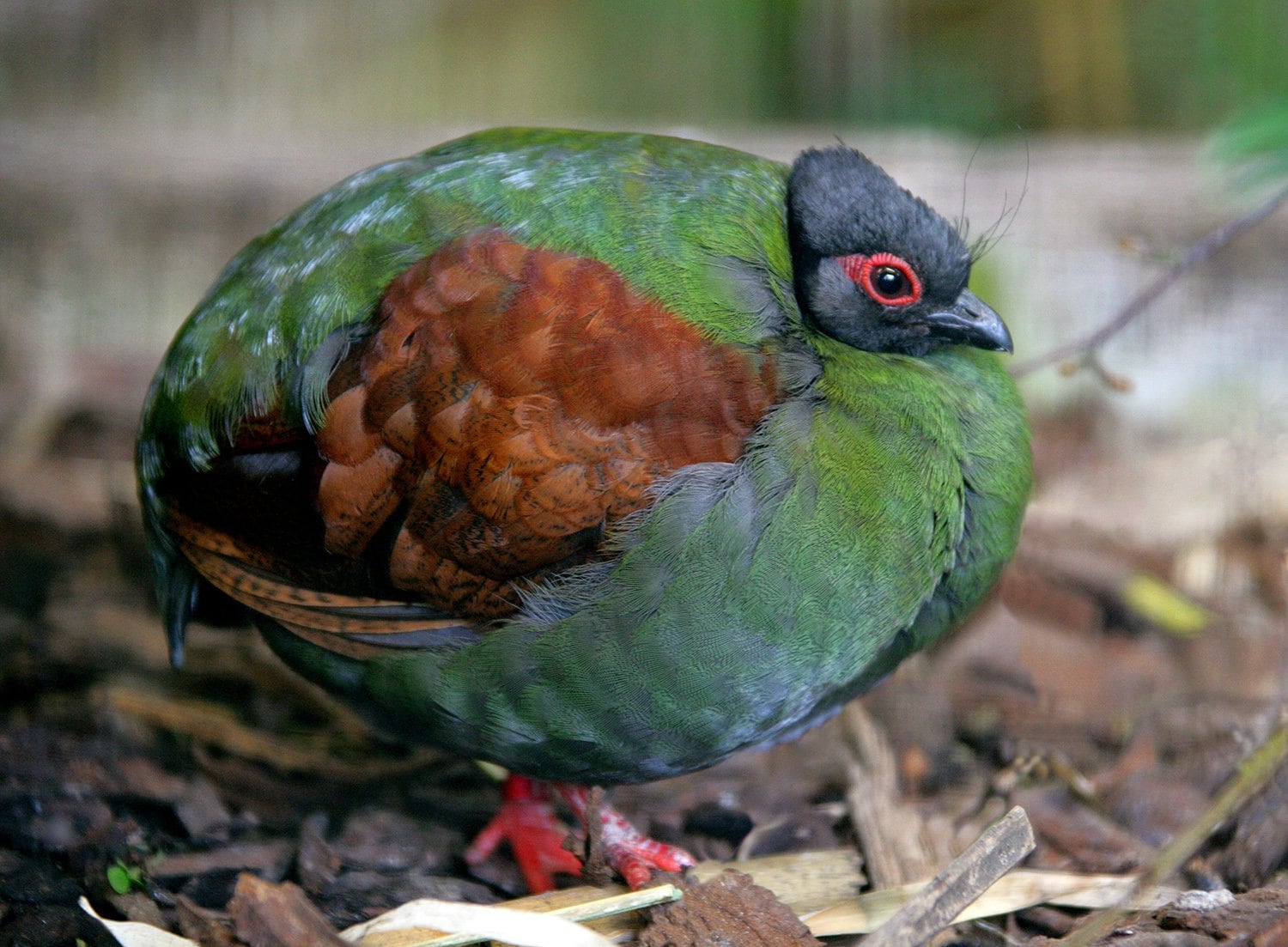The crested wood partridge is just fabulous

Bec Crew
Bec Crew

Who is she? Where’s she going? Can I come? The crested wood partridge might look like a fabulous lady, all dressed up and ready for the opera, but this enchanting creature is a male, all dressed up and ready for, well, the ladies.
Found in the low-lying rainforests of Southeast Asia, including in south Thailand, Malaysia, and Indonesia, the crested wood partridge (Rollulus rouloul) belongs to the pheasant family, a group known for their elaborate colours and plumage.
The males are decorated with sky-high crests and bright red colouring around the eye, on the beak, and on the legs. The rest of them is a deep, glossy black colour that fades into a mossy green.
The females also have the red eyes and legs, and their colouring is a combination of olive green, light grey, and chestnut. Here’s a female, showing off her forest hues:

Crested wood partridges are, to put it bluntly, stout, rotund, small-headed, and stumpy-tailed little birds, but that only adds to their allure. What are they hiding under all that plumage? You know what they say about big hair.
Their short stature is well suited to rooting around on the forest floor for seeds, fruits, and the occasional snail. They’re actually pretty smart about foraging – they’ll hang out under trees populated by monkeys, flying foxes, and other birds, so they can pick up any fallen morsels. They’re also known to follow wild pigs around for the same reason.
When threatened, the crested wood partridge’s powerful little legs are their only defense – they prefer to scuttle into the underbrush, rather than attempting to fly away. But they will fly if absolutely pressed.
The sweetest thing about these birds is that they form monogamous pairs, and if they’re ever separated, they will call to each other in soft, mournful whistles. They build their nests in a shallow burrow, hidden under a heap of dead leaves.
What’s sad about these birds is that their lack of mobility means they’re especially vulnerable to habit loss. They’re classified as near threatened across their entire range, and are particularly scarce in Thailand.
Some countries, such as Malaysia, have designed protected areas for the species, with hopes that they can build up their numbers once more.
Here’s a lovely crested wood partridge couple, being very gentle and quiet:




